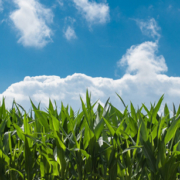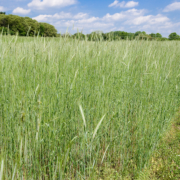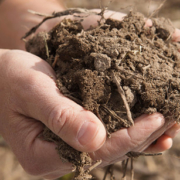Ready for the Future? Climate Disruption and Crop Insurance
 Print This Post
Print This Post
By Jeff Schahczenski, NCAT Agricultural and Natural Resource Economist
Craig Schmitt, a long-time organic grain farmer from Wolf Point, Montana, has some problems doing the right thing. Having just recently recovered from a bout with COVID-19, he feels lucky to be well again. However, being ill put him behind on seeding and he is almost always worried about enough rain to bring his crops to fruition. Montana is a semi-arid dryland farming area, and that means that using cover cropping (or green manures), minimizing tillage, and optimizing soil moisture is tricky.
However, another important consideration is how to best optimize crop insurance under a certified organic production system. “I am a regenerative organic farmer, and I want to limit tillage and assure soil health, but crop insurance rules get in the way of developing a resilient system in the face of growing extreme weather and climate disruption,” says Schmitt.
How and why do crop insurance rules limit adaptation to growing weather and climate disruption?
Part of the answer is that the federal crop insurance program, run by the USDA Risk Management Agency (RMA) and sold and serviced by 14 private crop companies (known as Approved Insurance Providers, or AIPs), views the past as the prime determination of the future. Any deviation from farming practices that jeopardize the insured crops’ “ability to make normal progress toward maturity and produce at least the yield used to determine the production guarantee or amount of insurance” can cause a farmer to lose or have a reduction in coverage.
This is, in fact, the RMA’s definition of what it calls Good Farming Practices. So, when an organic farmer like Mr. Schmitt seeks to adopt a practice like green manure cover cropping and wants to inter-seed a cover crop into the cash crop to minimize tillage in weed control, he may jeopardize his crop insurance coverage because of the likelihood that such practices may have some, difficult to predict, impact on yield. Furthermore, if Mr. Schmitt wishes to practice continuous cropping on a particular field, and does not “summer fallow” a field, then he must pay higher insurance rates because long-time use of summer fallow in Montana and many dryland farming states has its built-in historic yield history, which will certainly be upset by changing from summer fallow to continuous cropping practice.
Due to intensive efforts by many organizations to change the impact of crop insurance rules on the adoption of innovative sustainable practices, the 2018 Farm Bill supposedly solved these problems. It suggested that a farmer could adopt cover-cropping practices so long as the farmer followed either a confusing and evolving guidance set by the USDA Natural Resources Conservation Service (NRCS) or received approval by local, but undesignated, agricultural experts. However, farmers have little time to search out official sanction by experts who themselves do not have easy answers as to how best adopt a given innovative practice in each ecology without impacting historic yield. Moreover, the NRCS guidance has not kept up with emerging best practices developed by farmers and cover crop researchers.
The predictions of many scientific studies clearly suggest that extreme weather and climate disruption is going to be our future. Farmers and ranchers need insurance in the short term to weather this future. No matter how resilient the farming or ranching practices that are used, floods and drought are still destructive.
As this blog is being written, 60% of Montana is in some level of drought and federal disaster conditions have been met for 13 of its 56 counties. If, however, public crop insurance policy constrains adaptation to more resilient systems, the public and private costs are likely to grow.
Mr. Schmitt and other farmers are still waiting for a satisfactory solution to their desire to continue down the path of adopting regenerative practices without jeopardizing their ability to be insured through the federal program. The U.S. Department of Agriculture can and should make the needed changes in their policy to remove this barrier to cover cropping and other critical land management conservation practices.
Resources
For a more detailed discussion of the issues discussed in this blog, see our ATTRA webinar, Climate Disruption and Crop Insurance: What are the Connections?
For more details on USDA Risk Management Agency Good Farming Practice policy, see Good Farming Practice Determinations Standards Handbook.
For recent information on drought conditions in the United States, see United States Drought Monitor.
This blog is produced by the National Center for Appropriate Technology through the ATTRA Sustainable Agriculture program, under a cooperative agreement with USDA Rural Development. ATTRA.NCAT.ORG.




 USDA
USDA






